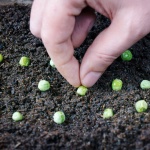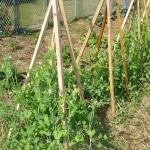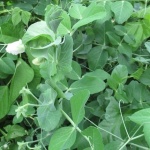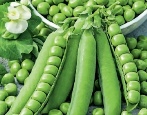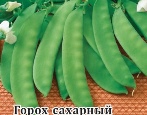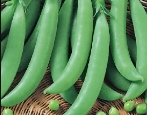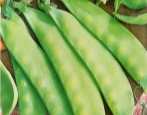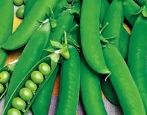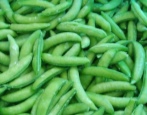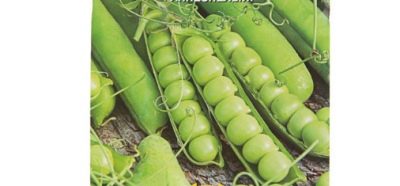
- Authors: Nastenko N.V., Kachainik V.G., Gulkin M.N.
- Year of approval: 2014
- Ripening terms: mid-season
- View: peeling
- The period from germination to technical ripeness: 55-60 days
- Stem length, cm: 60-70
- Stipules: medium to large with a waxy coating and slight mottling
- Flowers: white, large
- Parchment layer: available
- The height of the location of the first bean above the soil surface: 29-34 cm
Slider is a shell pea variety developed by Russian breeders and approved for use in 2014. In just a few years, this pea has become popular among summer residents, which is explained by some of its features.
Description of the variety
Slider seeds are widely available, but easier to find online. The peas for planting are large and always of the same shape, they also have good germination. It is a high-yielding variety and can be harvested all summer long. Recommended for growing in the Central and Volgo-Vyatka regions.
Characterization of the appearance of plants, beans and seeds
The stem of the Slider is usually below average, only 60-70 cm, which means that it does not need a garter, which makes the growing process easier. The foliage of this pea is weak, the stipules are covered with light spots and a small waxy coating. The flowers are large, white in color. The first pod is located 29-34 cm above the ground.
The pods develop up to 10 cm in length, they are straight in shape with a blunt top. Each contains 8-9 large peas, which are light green in color at the stage of technical ripeness. The mass of a thousand seeds is 220-280 g.
Purpose and taste
Consumers note the very sweet, delicate taste of the peas. They have universal application and are suitable for fresh consumption, for canning, home cooking, freezing, and drying.
Ripening terms
From the day of germination to harvest, it takes about 55-60 days, and this is typical for varieties with a mid-ripening period. For Slider, amicable ripening of beans is characteristic.
Yield
On average, this variety yields a yield of 0.5 kg / m2, the yield of green peas from beans is 41%.
Growing and care
Peas are planted in the garden from April 25 to May 10. It is important to select the most suitable site before sowing. This variety prefers to grow in non-acidic drained soil. The garden bed must be well lit by the sun. Pay attention to future neighbors: if mustard and other spicy herbs are planted nearby, this will scare off some pests, and also become an obstacle to the development of weeds. In the case of the neighborhood with tomatoes, excellent growth of the green mass of the peas can be expected, as well as a good harvest. And the peas themselves can become useful for other crops, for example, the neighborhood with them will have a positive effect on the harvest of cucumbers, carrots and turnips. Sowing looks like this.
Make grooves 3-4 cm deep.
Sprinkle the furrows with a mixture of wood ash, compost and fertile soil in a layer of 2-3 cm.
Moisten the planting site well.
Plant seeds in a 30x15 cm pattern.
Cover the furrows with soil and compact.
Follow-up care necessarily includes watering, it must be timely. It is especially important to monitor the moisture content of the soil during the period of fruit ovary, since its drying out will negatively affect fruiting. As already mentioned, these peas do not need support.
The culture is often prey to birds. You can protect the plant from birds using a covering material or special nets.And also peas should be periodically loosened and weeds should be weeded out, it is better to carry out these procedures after watering. The first loosening is carried out within 7-10 days after the emergence of seedlings, this manipulation ensures free penetration of oxygen to the young root system.
Slider will not refuse feeding. The first fertilizer is applied during active growth of the green mass before flowering. Organics are suitable as a starting additional food, for example, nettle infusion or mullein solution. After flowering, a nitroammophoska solution will be more appropriate.
There is no information on common diseases and pests that can attack this variety, but it is known for sure that it has a high resistance to lodging.

